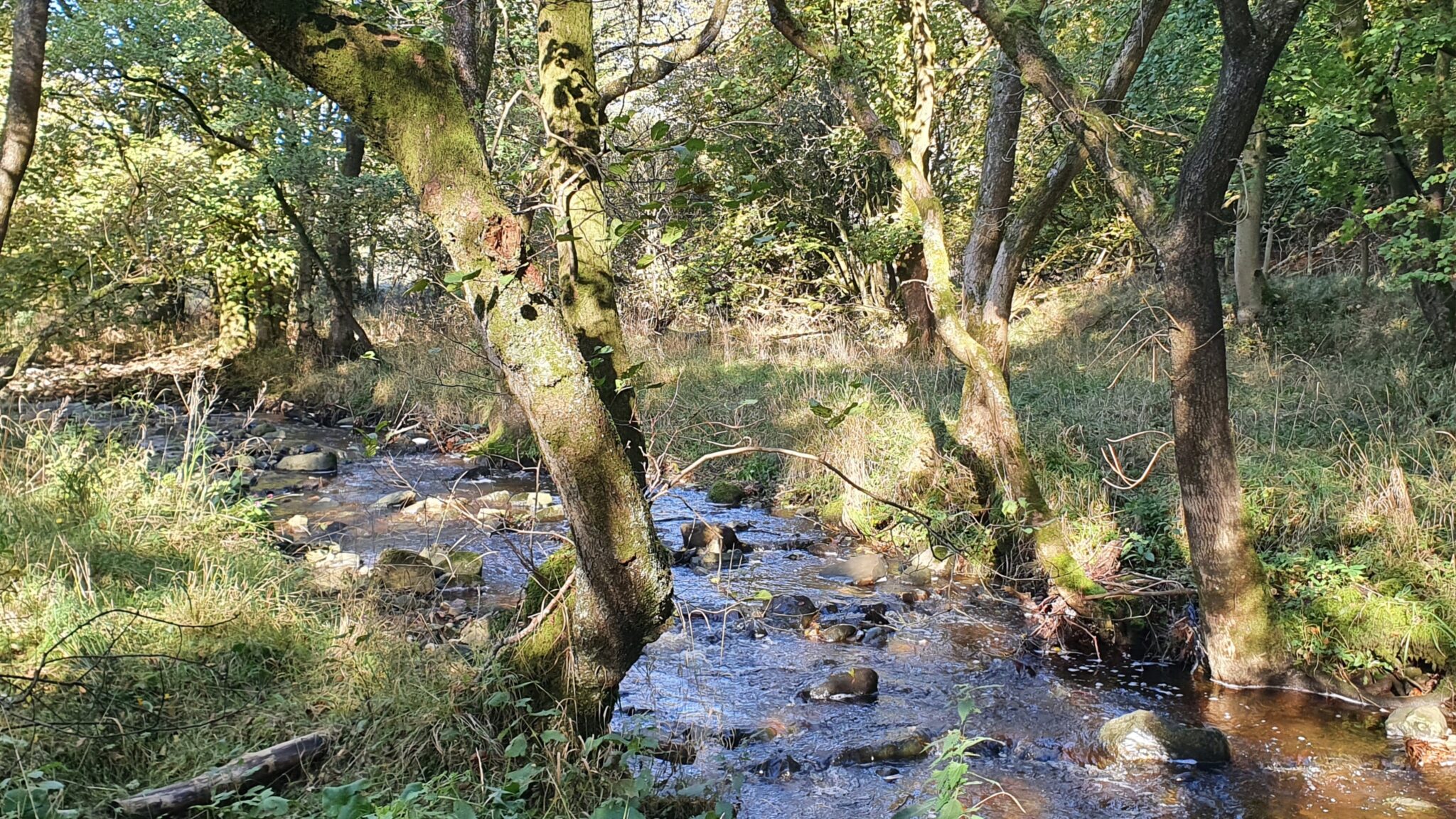Our latest NFM, or Natural Flood Management, project is due to start this spring.

As the name suggests, NFM is a natural way of reducing flood risk. Whilst it’s not sufficient to prevent flooding in towns and cities (unless combined with other projects), NFM is great for reducing flood risk on a smaller scale.
How will you use NFM?

The Brackenhurst NFM project has been developed to reduce extreme flows on a local beck. At the moment the beck is very susceptible to flooding. Therefore, whenever there is a high rainfall event, the beck fills rapidly. In turn this leads to the erosion of riverbanks and an increase in the amount of sediment and pollutants in the water. It also washes away invertebrates, fish eggs and young fish, and increases flood risk to local villages.
Luckily, the beck is an ideal watercourse for leaky dams! Using natural woody materials, we’ll work to address the extreme flows. By slowing the flow of water we can reduce flood occurrences, bank erosion, and sediment and pollutant inputs. The leaky dams will also create new underwater habitats and hiding places for invertebrates and fish.
What is a leaky dam?
There are five types of leaky dams. Leaky dams, bank top diverters, tree-head dams, gully stuffing, and flow path interceptors. Our leaky dams are usually typical leaky dams; large logs or trunks laid across a stream with wood and brash in the river channels. In normal and low flows the water passes underneath them as normal, but when river levels start to rise the leaky dams hold back water and, if necessary, force the water out of the channel onto mini floodplains.
So, what does this project involve?
For this project we are creating a series of six leaky dams spaced along the beck. This is in accordance with the best practice guidance from the Sussex Flow Initiative on the River Ouse, who recommend creating leaky dams in sets of three.
In order to reduce the carbon footprint of the project, and make the work as natural and sustainable as possible, we’ll be using wood which we will coppice from the site. This wood will form the majority of the leaky dam structures.
What is coppicing?
Coppicing is an ancient woodland management method which takes advantage of a trees ability to grow new branches from their stumps when they’re cut down. This can be done again and again with no damage to the tree however, some trees respond better than others. In the past the wood from coppicing was used to make animal fencing, building materials, and more. However, as the demand for wooden poles has reduced well maintained coppices have become fairly rare, despite many species relying on this habitat.
We won’t be coppicing all of the trees. Some will be hinged trees, which means that the tree is partially felled into the river channel. The remaining wood which attaches the tree to the stump will naturally secure the tree in place and allow the tree to continue living and growing.
In addition to the coppiced material, we will also be utilising Christmas trees. Age UK Lancashire collected these trees especially for this project. Not only does this reduce landfill waste, but it provides us with excellent brash which can be used in leaky dams and to stabilise river banks, reducing the risk of further erosion. In time they will break down, but first they will collect debris and sediment, which will compact and build the banking back up.


